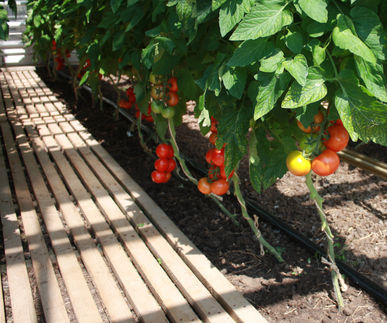How safe are materials and items which come into contact with foods, feeds and food-supplying animals?
Status Seminar at BfR on contact materials in the food chain
Materials which come into contact with foods must meet special safety requirements. No substances may migrate from them into the foods which could damage the health of consumers. For materials which come into contact with feeds these special regulations do not exist. At the Status Seminar "Contact materials in the food chain", some 50 experts from universities, research institutions, associations, industry, Federal and Land authorities asked the question at the Federal Institute for Risk Assessment (BfR) in July whether substances which can migrate during production, storage and processing of feeds into the feeds and from there to the animal and through the consumption of animal products also to humans constitute a risk. "We must verify whether it is necessary and possible to transfer rules and regulations from the food area to feeds", says BfR President Professor Dr. Dr. Andreas Hensel.
The Status Seminar at BfR pursued the goal of gaining information on a possible migration of substances from contact materials in foods and feeds along the food chain. Whereas foods are subject, apart from the statutory obligation of food safety, in many areas to detailed rules and regulations concerning the migration of substances from contact materials such as plasticisers and mineral oils, these detailed provisions do not apply to feeds.
During production, processing and storage foods and feeds come, however, into contact with a large number of materials. The cereals on the field are harvested with a combine harvester. This can involve an abrasion of metal and plastics particles as well as paint components. During storage in silos, substances might migrate from the silo walls to the cereals. During feed processing, e.g. in compound feed plants, substances can reach the feeds through metallic abrasion. If additives are included in the feed for preservation reasons, this can result in substances dissolving from the packaging and migrating to the feed.
Animals kept for the production of foods may take in undesired substances through materials in their life environment. Materials which are used for stable facilities are often "worked on" by the animals so that certain substances can be taken up by the animals. For reasons of animal protection, animals are often offered manipulable materials made of metal or plastics. Animals can take up substances from these materials, too. This not only raises the question of health impact for the animal but also the issue of accumulation in foods of animal origin.
In the course of the Status Seminar substances were identified which could be relevant for a migration of contact materials to the food chain, but also areas were identified which hardly offer any migration routes. First information about lifetimes of technical facilities for food and feed working and processing (wear and tear, abrasion) were shown and will continue to be examined after the seminar. The provisions from the food area are apparently already applied to feed packages. Special issues which remain after the seminar as well as open subjects for further events such as contact of foods and feeds with materials during storage and transport, stocktaking of substances during food and feed production, extrapolation of models for the calculation of substance migration from contact materials of foods to feeds, examination of manipulable materials as competing products for stable facilities (e.g. feed trough, drinking trough) as well as the input of biocide ingredients th rough contact materials treated with biocide products (e.g. disinfectants) were discussed. Concepts for the evaluation of the input of biocides through contact materials are currently elaborated on an EU level within the framework of guidelines.
Most read news
Other news from the department science

Get the chemical industry in your inbox
By submitting this form you agree that LUMITOS AG will send you the newsletter(s) selected above by email. Your data will not be passed on to third parties. Your data will be stored and processed in accordance with our data protection regulations. LUMITOS may contact you by email for the purpose of advertising or market and opinion surveys. You can revoke your consent at any time without giving reasons to LUMITOS AG, Ernst-Augustin-Str. 2, 12489 Berlin, Germany or by e-mail at revoke@lumitos.com with effect for the future. In addition, each email contains a link to unsubscribe from the corresponding newsletter.

























































